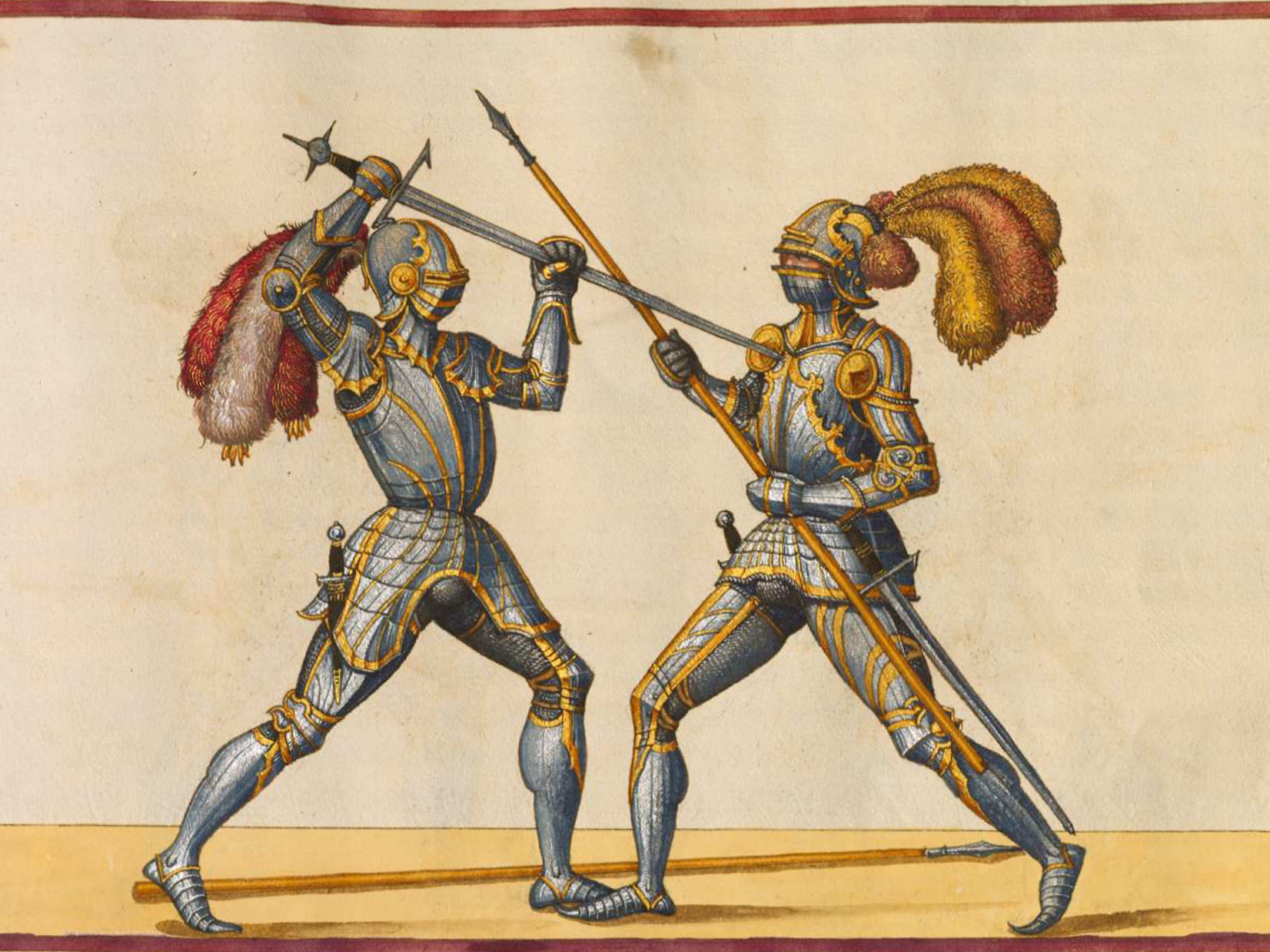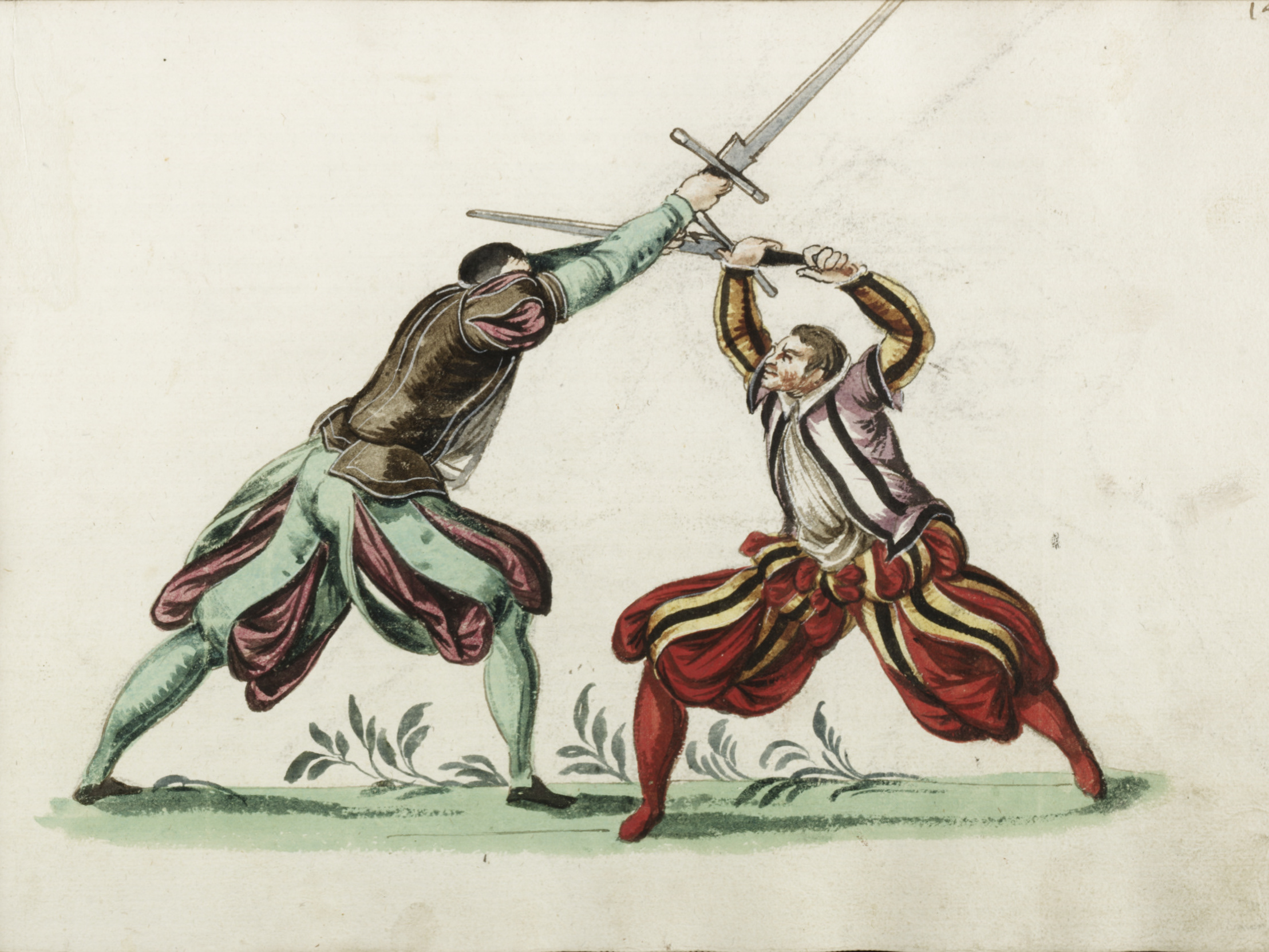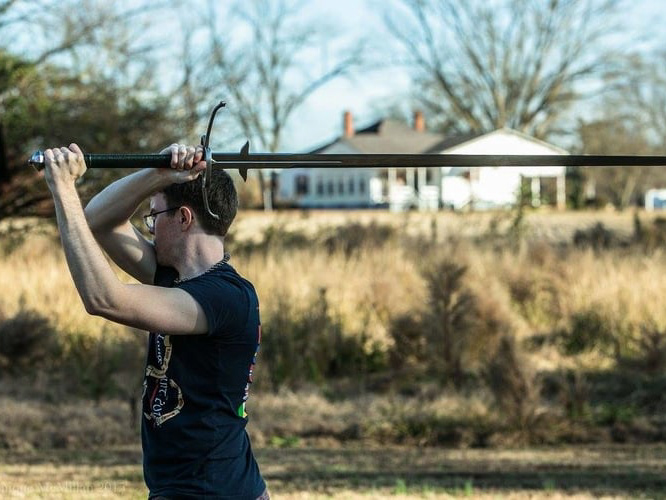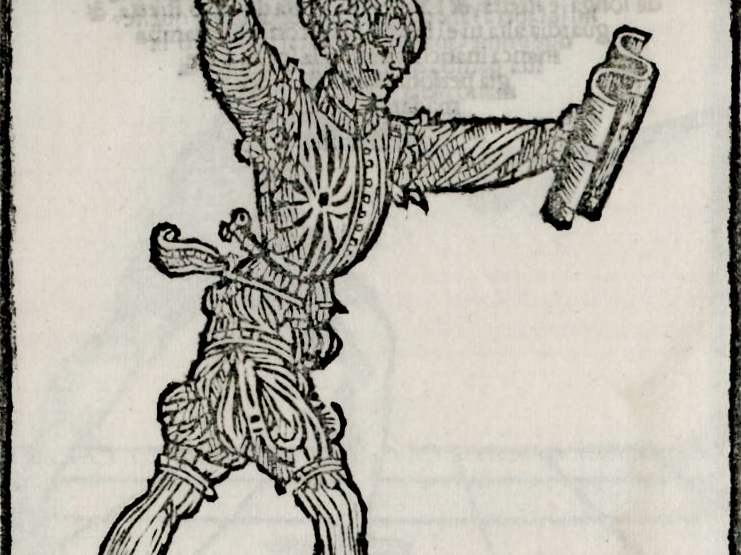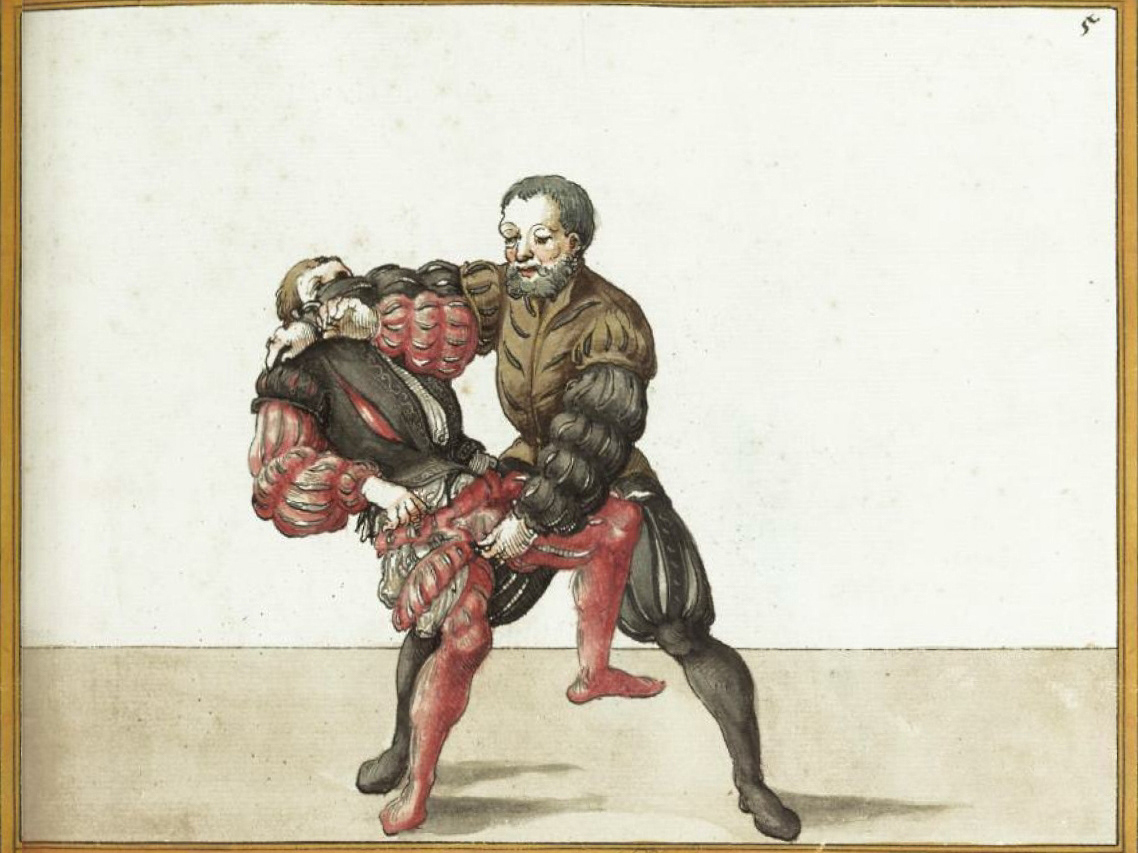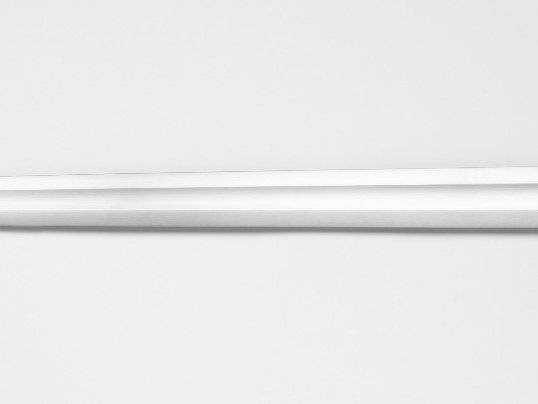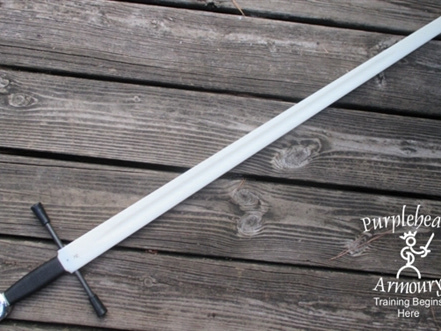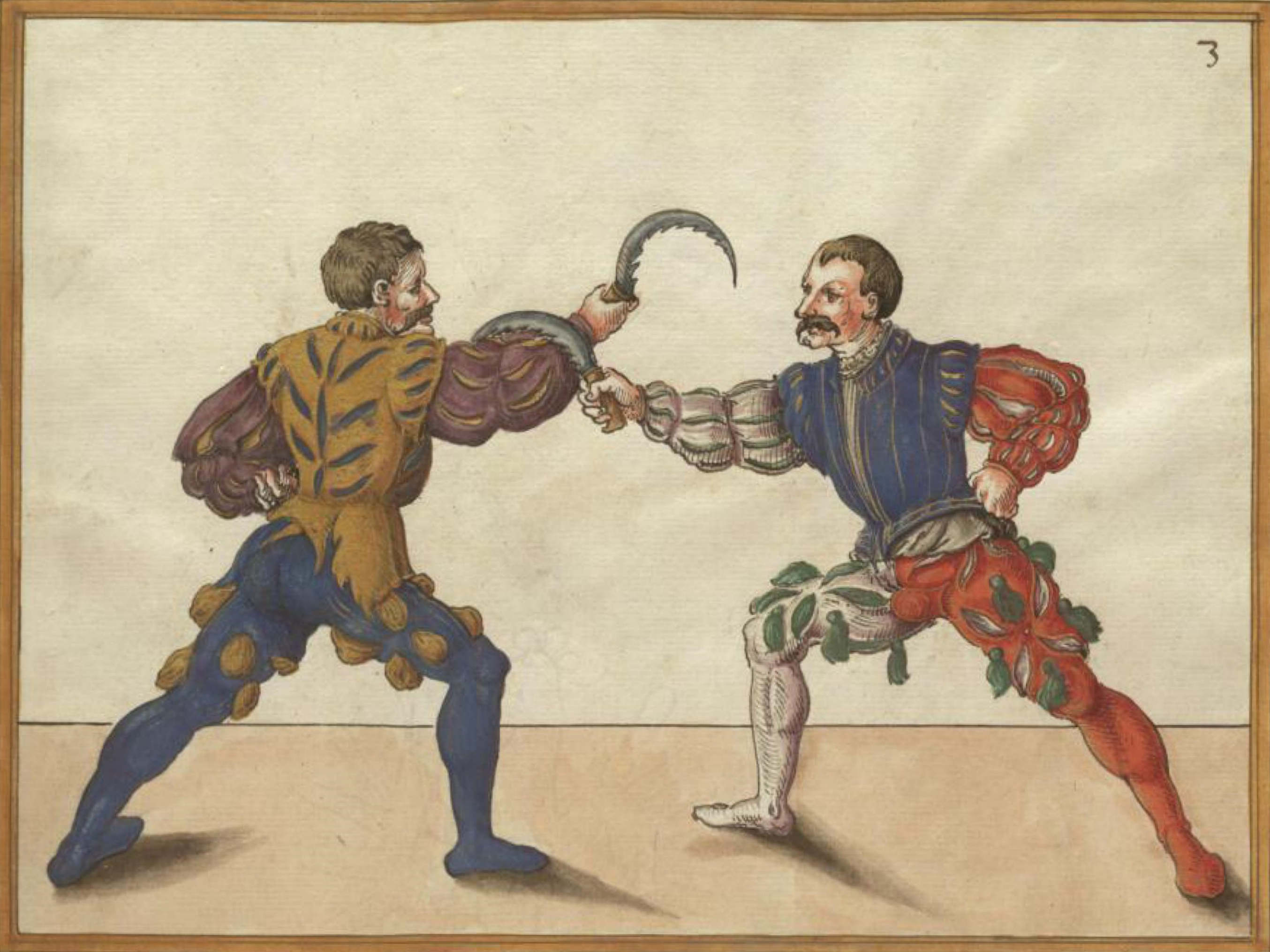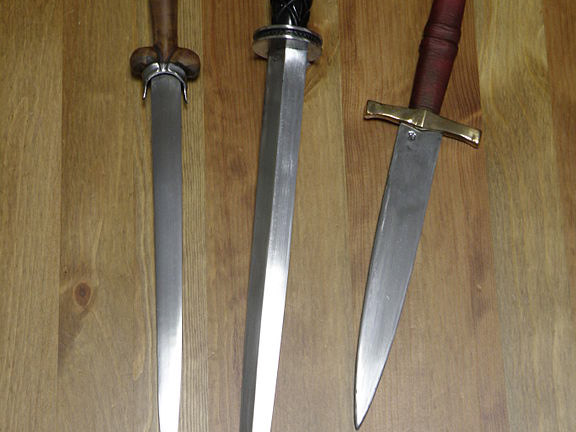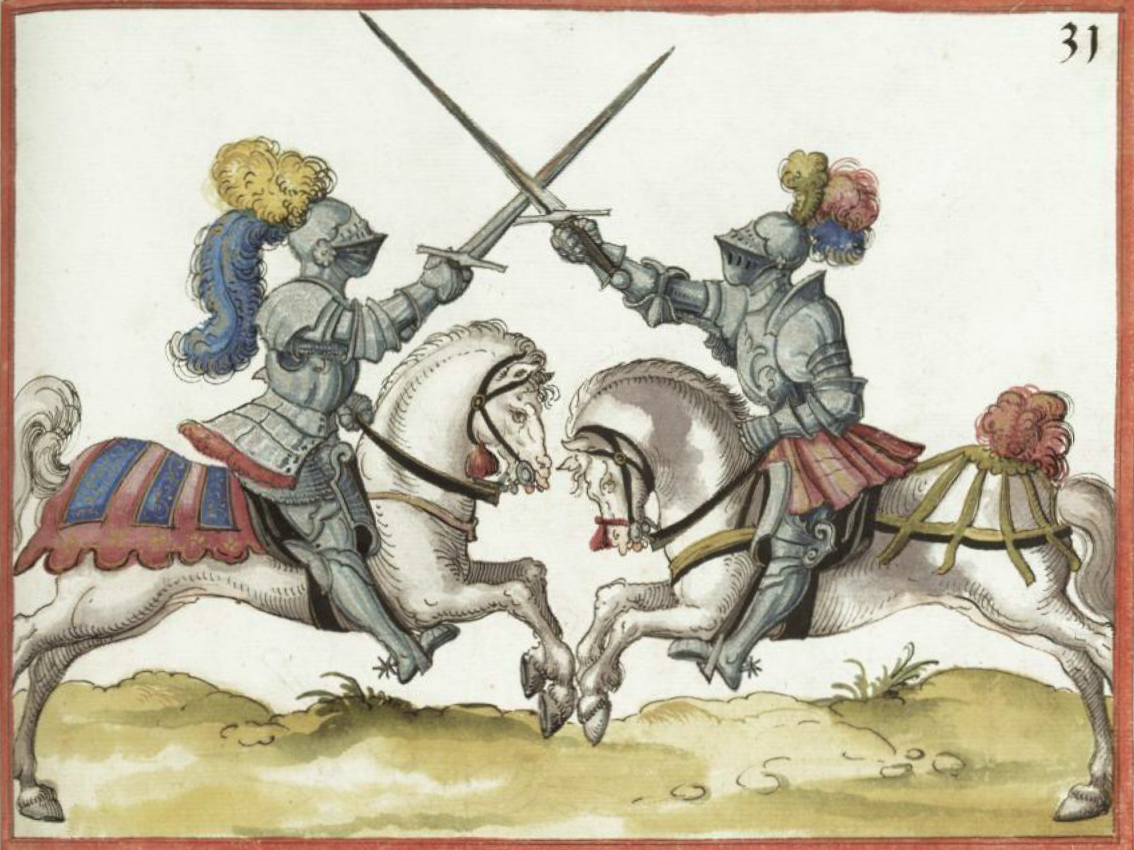Singlestick
A singlestick is a type of training saber. It is made of a medium-length rattan or hickory stick with either a synthetic or leather basket hilt to protect the hand. The goal is to provide an inexpensive training weapon for students learning to use one-handed weapons. The fighting style and guards are drawn from/inspired by various saber and backsword systems. It was used extensively by sailors in the navies of the world to train the use of the saber on a ship. Eventually, it became a sport in and of itself as the military use of the saber declined.[1]
The Purpleheart Armory singlestick with a leather basket hilt has become one of the industry standards for its quality and reliability.
Courtesy of Purpleheart Armory.
Historically, the single stick was made from ash with a leather or wicker basket. Modern single sticks are made with hickory, or more commonly, rattan with a plastic or leather basket.
A Breakdown of singlestick anatomy.
Courtesy of Purpleheart Armor, edited by Nicholas Allen. All Rights Reserved.
Sources
British
Manual of instructions for single stick drill (1886): This is a training manual for cavalry recruits in the British military. Since it is a military book written in English, designed specifically for the instruction of new fencers, and has clear instructions and terminology, the manual is an excellent starting point for beginner fencers.
Demonstration
An example of singlestick sparring
Dussack
The dussack was a single-edged sword used as a sidearm in the 16th and 17th centuries. A training version made of leather or wood was commonly used to train students in saber/messer and remained popular all the way up to the late 18th century. In the context of HEMA, Dussack usually refers to a practice weapon shown in Joachim Meyer’s treatise, designed to help students practice and train with one-handed swords. [2]
Roger Norling wrote an excellent article about the dussack’s use in war as well as it’s role as a training tool.
Meyer's dussack.
Courtesy of Wiktenauer.
A breakdown of dussack anatomy.
Courtesy of Purpleheart Armory, edited by Nicholas Allen. All Rights Reserved.
Sources
Andre Paurñfeyndt (1510-1564): Paurnfeyndt was a German Federfechter (a member of an established fencing guild) and wrote a messer treatise specifically for beginners learning messer. The weapons depicted in the greatest resemble training messers or dussacks and the techniques outlined for messers are just as applicable to dussack.
Joachim Meyer (1560-1570): One of the most well-known sources for dussack comes from Joachim Meyer’s treatises. Meyer's dussack system, designed for the broad proto-sabers that spread into German lands from Eastern Europe in the 16th century, combines the old Messer teachings of Johannes Lecküchner and the dussack teachings of Andre Paurñfeyndt with other unknown systems possibly early Polish or Hungarian saber systems.
The Second Part of This New Art-Rich Fencing Manual (1591): This manuscript is unusual both because of its unique art style, portraying large fencers drawing huge amounts of blood despite using training weapons, and because it treats all of the typical weapons of the day but shows no connection to the tradition of Johannes Liechtenauer. Regardless it’s dussack system offers unique techniques and depictions.
Demonstration
This video demonstrates several Meyer ideals communicated through the dussack
This video shows sparring with leather-covered dussacks without protection, emphasizing their use as a training tool.
Equipment
HEMA gear on TOTA has an extensive list of recommended dussack and singlestick equipment for beginners in HEMA.
Works Cited
Footnotes
[1] C. Phillipps-Wolley, "Journal Of Manly Arts", Ejmas.Com, 2001, https://ejmas.com/jmanly/articles/2001/jmanlyart_Phillipps-Wolley_1101.htm.
[2] Roger Norling, "The Dussack - A Weapon Of War | HROARR", HROARR, 2012, https://hroarr.com/article/the-dussack/
Citations
Norling, Roger. "The Dussack - A Weapon Of War | HROARR". HROARR, 2012. https://hroarr.com/article/the-dussack/.
Phillipps-Wolley, C. "Journal Of Manly Arts". Ejmas.Com, 2001. https://ejmas.com/jmanly/articles/2001/jmanlyart_Phillipps-Wolley_1101.htm
Written by Nicholas Allen, founder and former head instructor of the VCU HEMA club.
Edited by Kiana Shurkin, xKDF
Historical sources fact-checked by Michael Chidester, Editor-in-Chief of Wiktenauer
